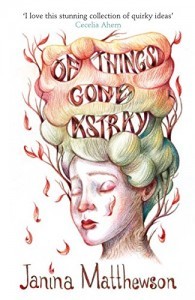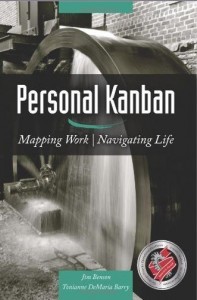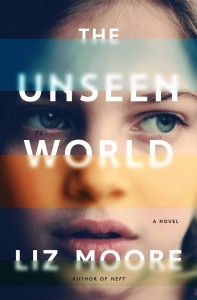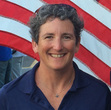Carol Newman Cronin's Blog, page 47
March 23, 2017
Creative Writing: Leaps of Discipline
Starting anything (novel, love affair, home improvement, even this blog post) requires a leap of faith.
Finishing it requires discipline.
In between? That’s where the new book and I are now. For the past two months, I’ve been filling plot-holes, moving detail to the right place, and eliminating anything that doesn’t move the story forward. Six years ago I wrote, “Now I remember why there are always passages in my first drafts where nothing really happens; it’s because sometimes the only way to find out what happens next is to keep typing.” (Read more.) Once the next step becomes clear, those “nothing really happens” sections have to go.
This stage of the process requires constant leaps of discipline. I have to keep jumping ahead of where I am, still listening to my characters but also reining them in if they wander too far off-script. These leaps vary in size and scope—though none will be as hard or as big as that first giant and terrifying leap of faith that got the ball rolling in the first place. And all require belief that this work is valid, and that it will be important to my readers—not just to me.
Creative Discipline
Belief in the work itself is especially important when the world I’ve created doesn’t yet exist for anyone else. When the ideas are flowing fast and the plot-holes are almost filling themselves, this belief is standing right beside me, handing over the shovel. But the only way I get ideas to flow is through the discipline of writing every day—even on days when those plot-holes seem large enough to swallow me whole. It’s a vicious circle; faith is the only way to get started, discipline is the only way to finish, and along the way I need the right combination of both.
Definition of Done?
When I write stories with school kids, I try to help them visualize the arc of our story by having them choose two harbors on a chart, and then moving a model boat from one to the other each time we come up with a plot point. There’s nobody helping me find the harbor at the end of this story, except my characters—and they are almost as likely to jackhammer a fresh plot-hole as they are to steer me toward the finish line. Leaps of discipline are the only way to muscle through this stage, the only way to connect what is already on the page to what will, hopefully, seem like the only logical conclusion.
Faith isn’t the only thing that makes leaps into the unknown possible; discipline, it turns out, can leap too. And if I keep making the effort, we’ll all end up driving down a straight smooth road, right to the end of the story.
March 16, 2017
Case Study: Design Helps Content
In today’s world of content shock and stimulus overload, readers will move on to another story if text isn’t clear, accurate, and well formatted. The copy of Safety at Sea: A Guide to Safety Under Sail and Personal Safety that just landed on my desk is a great example of how layout can help us absorb what’s on the page.
(This is the project that was Saved by the Deadline.)
While the original brief was to create an instruction manual for USSailing’s Safety at Sea course, the combination of excellent information with a nice layout and useful graphics turns these 220 pages into a valuable stand-alone book for anyone interested in safety offshore. By coordinating so much knowledge into one cohesive unit, we created a book that is masquerading as an instruction manual.
Content Coordination
Chuck Hawley, the project’s chieftain, has been compiling content for a publication like this since 2012. By the fall of 2016, he and Sally Lindsay Honey had already collected a TON of information from an impressive list of experts and divided the topics into fifteen chapters. My job was to coordinate it all into one cohesive unit, without losing any of the useful details that dug so deep into various topics.
As black text on a white page, most of it was a pretty dry read—though maybe that’s not the right adjective for a book dedicated to the very wet world of offshore safety. Then we started adding graphics and testing out various page templates, and the content came to life. Words can tell a story on their own, but combining text with helpful graphics and photos made it easier to “see” the key points we were trying to make.
Working with Chuck and Sally was a treat. They knew the material very well, but they also knew who to ask for a clarifying detail when needed. I brought just enough experience of life offshore to understand the topics—though best practices have evolved quite a bit since the 1980s, when a Transatlantic and several other offshore passages made these topics a more personal priority. And that perspective helped me to maintain the editor’s middle distance.
Custom Graphics
The other key person involved was Brad Schoch, USSailing’s Instructional Designer. When we discovered we were missing a couple of key diagrams, Brad quickly created them, filling what would otherwise have been obvious holes with graphics that matched the rest of the chapter.
While book and online learning can never replace the actual experience of righting a capsized liferaft or putting out a galley fire, thinking through various situations—and reading about how others dealt safely with different types of emergencies—is still extremely valuable when preparing to head offshore. I like to think that helping to make this book look so good will help both experienced and aspiring offshore sailors to absorb the excellent information crammed between its covers.
Whether or not you plan to take the Safety at Sea course, you can buy the book at the USSailing Store. And if you have any feedback, send it to safetyatsea@ussailing.org. Changes will be incorporated into the second edition, which is scheduled for 2019.
March 9, 2017
Book Review: Of Things Gone Astray
When I first finished this lovely fable of a novel, I didn’t quite know how I felt about it. The ending seemed a bit abrupt, with too many loose ends.
 Here’s why that bothered me so much: because each of the characters had seeped into my consciousness, and I wanted them to be granted a happy ending. Instead author Janina Matthewson ended each story realistically, without eliminating the possibility of a happy ending that might or might not occur at some point in the not-yet-written future.
Here’s why that bothered me so much: because each of the characters had seeped into my consciousness, and I wanted them to be granted a happy ending. Instead author Janina Matthewson ended each story realistically, without eliminating the possibility of a happy ending that might or might not occur at some point in the not-yet-written future.
I decided to write a review when I realized I was still thinking about several of the characters a week after I finished the book. And I also wanted to figure out how this unusual story—which is also a collection of unusual stories—could break so many rules and still do its job so well.
The chapters jump from one character to another, and the only common theme is that each has lost something important. Most of these “things” (and I use the term loosely) are items that many of us mostly take for granted. Since the characters are all quite ordinary, it’s easy to empathize with them—and then it’s a quick leap to what our own lives would be like if, say, we woke up one morning to find the front wall of our house had completely disappeared.
Obviously there’s some fantasy involved here, but the writing does its job by anchoring us firmly in a world where such things could happen. And that’s what I mean about rules broken; Matthewson doesn’t fill in all the blanks, which allows our imaginations to work on their own (what would a tree look like once it set down roots in the Heathrow arrivals lounge?). She also doesn’t let coincidence play too big a part in tying the stories together, though some of the characters do come in contact with one another in a natural way—which then alters the progress toward finding what they’ve lost.
I’d recommend this book to anyone who enjoys a flight of fancy or a well-written story that’s a little outside the usual novel comfort zone. And I can’t wait to see what Janina Matthewson comes up with next.
March 2, 2017
Character Names: The Choice
I’m about to make a big decision: Whether to rename my main character or leave him be.
Thanks to Scrivener’s global Find/Replace, the mechanics of a novel-wide name change are easy. It’s the psychological aspects of the choice that are difficult. How can I let go of a name that helped me get to know this guy? It’s distinctive, and it belongs to him.
But for the past several months, I’ve been thinking that this particular name is also confusing on the page. And that means the book would be a better read if I renamed him.
I’ve made this decision before; the female character in Game of Sails went through at least one global find/replace before she settled in as Casey Morgan. We survived it, and it didn’t seem to bother her one bit. And yet even that history doesn’t make this current choice any easier.
My characters usually develop their traits on their own as I get to know them, but the naming process happens so early in our acquaintance that it is normally both conscious and somewhat arbitrary. This character, however, arrived with his name already firmly in place. I didn’t even like it at first, but it had served him well for forty years by the time we met. Who was I to arbitrarily change it, just because he showed up in my book?
So I kept him as is. And now that his story journey is complete, all that remains is to flesh out the details that add to that journey—and eliminate the ones that are confusing. Unfortunately, his birth name falls into the latter category in several scenes, because it is both too obscure and too easily mistaken for a similarly spelled object.
Common names do their work without requiring any extra parsing by the reader. When we read the sentence “Jane flew out the door,” we automatically picture a person. If our main character was called “Jet,” however, we’d probably have to reread that sentence a few times—especially if the story took place at an airport. (And why would a heroine be named Jet anywhere else?)
In real life, obscure names intrigue me. On the page, though, I’m beginning to understand the value of plain-jane vanilla. Changing this character’s name to something more familiar will lessen the reader’s distraction. And with so many other details to communicate about this world I’ve created, why make the reader’s life any more challenging?
Yesterday I came up with an alternative name, and over time it may even fit him as well as the original. But even though I know it will be good for the book, it also seems quite drastic. In my head, the letters on that birth certificate were inked in forty years ago. My character is not trying to escape some dirty family secret or start a new life; he was just born with an obscure name. It’s not his fault my readers won’t find it familiar.
I purposely haven’t asked for your help in making such a difficult naming choice; by the time you read this, I will have already made my decision. But I’m still curious to hear your thoughts about name choices in novels. Would Jane still be Jane if we did a global copy/replace to, say, Jet—and left all her other details the same?
February 23, 2017
The Positives of Personal Planning
Several weeks ago, after a sleepless night as the deadline for a big project loomed, I realized that Agile planning could help me gain control of my own workflow—even though Agile is usually promoted as a way to better collaborate with others. I had delved into Agile last fall to write a case study for a client, and I was curious to learn more about the topic, so the client directed me to a book entitled Personal Kanban.
Recently I wrote about the benefits of deadlines, which are one of the basic tenets of the Agile approach to time management. Here are a few others:
Before starting any project, predict how much time it will take (and then track the actual hours, to improve future estimates).
Have a strict “definition of done,” and stick to it.
After a project (or designated work period) is complete, review what could be improved.
Don’t try to multitask; finish one project before starting another.
Don’t do more; do better.
Personal Kanban
Personal Kanban: The Book is a quick read (I consumed it on a four hour airplane ride), and I highly recommend it for anyone who is ready to increase their own efficiency at work, at home, or even with hobbies. We all tend to begin any project with unreal expectations about how fast we will actually complete it and what will be included; whenever I first sit down to write a book (or even a blog post), I always think it will take just a few hours and include every great idea I’ve ever come up with. Based on previous experience, I know that writing a novel will take me a few years, while a short blog post takes a few hours. (And both will be better if they are limited in scope to only a few of my best ideas.)
So the first step is to limit our Work In Progress (WIP) to two or three projects at a time. But obviously, “write a blog post” doesn’t equal “write a novel,” though both could be written on a sticky-note and called “projects.” So one important aspect of all this is to understand the scope of what we’re trying to accomplish. Only then can we estimate what can realistically be completed in a pre-determined time frame (a day, a weekend, a month), which forces us to divide up anything larger into tasks that will fit into each specified time frame.
The goal is not endless planning (boring) but continuous improvement (exciting), which is why comparing our initial guesses about how long a job will take to the actual hours we put in is so important. Writing a novel will take more than a weekend afternoon, while writing a blog post should take less; understanding that is my the first step toward completing either job. It’s also a valuable way to gain control of all the conflicting demands on my time.
The standard workday used to be walled off from personal hours in both space and time; once you left the office at the end of the day, work was over until you returned there the next morning. These days, work bleeds over into personal time, thanks to our constant availability. So we have to find new ways to time-box the demands on our days.
Once I’d planned out my workflow for the last week before the big project deadline, I slept well again. I knew how long each project would take, which forced me to give up on a few more edits I would’ve preferred to make. Even those of us who work by ourselves can benefit from the Agile approach; it can help anyone who’s frustrated by (or worse still, can’t remember) how much she accomplished yesterday.
February 16, 2017
Fiction Writing: Matching Physical Traits to Personality
As a reader, I really appreciate it when another author includes just the right physical detail about a character. Ideally it communicates something about personality as well as describing how he or she looks. In the most memorable books, it might even predict the character’s place in the story—though I might only realize that after finishing the book.
There are plenty of clichés that do the job quickly but not at all memorably: dark-haired characters are often the villains, while the heroes and heroines are blond. The trick to memorable writing is to find something more unique that will still help reinforce a particular personality.
As a seat-of-the-pants writer, I usually know what my characters look like long before I figure out their role in the story (just like the people we meet in real life). But somehow, most of my characters’ physical traits turn out to be excellent indicators of their personalities. It makes me wonder if my characters arrive already knowing their place in the world I created, long before I’ve figured it out myself.
My least favorite character, Lloyd, is a perfect example. He strode into the first chapter of the new book awkward and tall, with a scab on the top of his balding head. I already knew I didn’t like him, but I didn’t yet know why—or why he needed to be included at all. As soon as I figured out how he’d gotten that scab, his role began to fall into place.
And then there are the traits that do their work a little too well, like the tail wagging the dog. When a girl named Feather first walked into the island’s only coffee shop, she seemed as wispy as her name. So to keep her from blowing away, I gave her a thick brown braid running down the middle of her back. Then she surprised me by rudely asking for a job and a place to live; now she’s insinuated herself quite firmly into the story. That heavy hair did its job even better than expected.
One thing that constantly amazes me about this process is how well such details stay attached to their characters. Three years after Lloyd first showed up, I described his scab again. When I referred back to his original appearance, to make sure the updated description hadn’t contradicted anything, I realized I’d used exactly the same words.
These island characters are stubborn folk, so it’s a good thing their physical traits usually match their personality. As I wrote back in 2011, when I was first getting to know all of them myself, “These characters are not really unformed; they are just as yet unknown to me.”
February 9, 2017
Saved by the Deadline
First, let me just admit that I hate working to a deadline. Unlike several writers I know, having a looming must-submit-by date does not improve either my creativity or work ethic; it just makes me lose sleep. So usually I try to complete assignments well ahead of time.
But now that I’ve finally sent a 200+ page book to press and can take a deep breath again, I’m reminded of the value of a firm, non-negotiable, date of completion. Because the deadline was the only thing that saved me from the perils of too much perfecting.
 I’ve been working at a feverish overtime pace on this project (a sailing course manual) since late December, and I’ve really enjoyed the entire process. (More about that in a moment.) Here’s a quick summary of the basic steps:
I’ve been working at a feverish overtime pace on this project (a sailing course manual) since late December, and I’ve really enjoyed the entire process. (More about that in a moment.) Here’s a quick summary of the basic steps:
Edit text
Place each chapter into book template, flow around graphics
Revise, send to client for approval
Incorporate additional suggestions
Create index and table of contents
Create printer-ready PDF, upload
Simple, right?
In actuality, steps 3 and 4 were repeated over and over again—because the client and I were so excited about the project. With every revision, we could see more changes we wanted to make (big, small, or usually somewhere in between) that would make the whole thing so much better… and those changes would then beget several more, as text was reflowed and pages were added or subtracted and the perfect graphic was finally located. Finally, only the deadline saved us from trying to build a perfect book.
Maintaining Perspective
The larger the project, the more important it is to consider what’s really going to make a difference to the overall quality. There are always improvements that could be made: text could be more logically ordered, a diagram could be tweaked again to better explain a point, a photo could be found that illustrates the exact situation more clearly than the one already in place. Without a firm deadline, there would’ve been no easy way to decide when the thing was really finished.
We’ve produced a book I’m really proud of, but there are still more changes we could’ve made. Just as there is no way to sail a perfect sailboat race, there is no way to produce a perfect book. So when does good become good enough?
The answer is: When the deadline arrives.
February 2, 2017
Freelancing: Invest in Yourself
A few weeks ago, a new desktop computer arrived at my office. (For you geeks out there, it’s a 27 inch 5K iMac.) Within an hour of setting it up, I’d already adjusted to the extra screen acreage—more than double what I had before.
By the next day, I couldn’t imagine how I’d been able to get anything done before it arrived. Typing this, I take for granted the multiple open windows I can see on the two screens… it’s almost as freeing as the view of a distant shoreline on my morning paddles.
As a writer/editor, my overhead is pretty small. But once in awhile, I see a way to invest in myself that pays off well beyond the dollar outlay. Good tools make me work more efficiently by making the job easier, but they also accomplish two other things that are even more valuable:
They remind me that I’m worth it. Taking myself and my work seriously is a way of showing its value to others.
They remind me that I’m a professional, not a hobbyist. If I don’t take my work seriously, who will?
As a freelancer, it’s all too easy to go without office supplies and state of the art equipment that an employer might provide. But part of our workday freedom is being able to choose what’s important to us—even if it’s something that just makes us happy when we sit down at our desks each morning. I happen to like paper goods, so even in this digital age my desk tends to be littered with memo pads, a printed calendar, Seahorse, and a few well-designed brochures from a recent research trip. I also like stuffed animals, so Max the Powermax monkey hangs from my (new daylight-simulating LED) desk lamp.
I spend so much time trying to get things right for my clients, it’s easy to forget to get things right for myself. But in the month since my new computer and new desk lamp went to work, I’ve been happier sitting down each morning—which definitely makes me more productive. By investing in myself, I’m showing respect for my own work, and that makes it more likely that my clients will do the same.
January 26, 2017
Seeing the Horizon
A few years ago, I realized that standup paddling was a great Cure for Cabin Fever. This year, I finally figured out why: it’s all about seeing the horizon.
Cabin fever is thought to be caused by too much time indoors, by not having enough space around us. For me it’s caused by going too long without getting on the water.
As soon as I step onto my board, I feel my world expand. Away from the confines of house and office, no longer limited by the speed of my typing fingers, my brain races ahead beyond what is logical and known to the land of “could be.” On my morning paddles, I come up with some of my best ideas for characters, books, songs, and even blog posts. Unlike sailing, my body is active but the tasks are almost automatic: lean into the paddle, feel the bite of water, pull it out again and bring it forward. Repeat. My brain is still sleep-fuzzy and not yet too critical, freeing ideas to flow. Together, mind and body race ahead to make links and jumps and connections that never would’ve occurred sitting at my desk.
Fortunately, my “horizon” doesn’t have to meet the strict definition of where the earth’s surface meets the sky. My eyes ignore any “irregularities and obstructions” automatically, even when I’m close enough to the shore to spot details: a lone seagull dropping a quahog shell, or a seaweed-coated rock showing half tide. As long as there’s a watery expanse ahead, my vision expands. That’s why living close to the water is so important to my creativity.
It seems quite ironic that when pluralized, “horizons” defines our limits: of mental perception, experience, interest, or education. But it also seems perfectly appropriate that astronomy assigns a specific definition for both a rational and a sensible horizon.
When I studied celestial navigation, I learned that you couldn’t get an accurate fix to determine where you were on the earth without being able to see an actual border between sky and sea, without any obstruction or irregularity. Luckily, I don’t need such a strict definition of horizon to figure out my place in the world. I just need a piece of water big enough to paddle across.
January 19, 2017
Book Review: Seeing Into The Unseen World
I stumbled onto this book almost by accident, proof that the most potent recommendations still come from people we “know,” or at least feel some connection with. The author, Liz Moore, and I have some Boston author friends in common, and as soon as I started reading, the setting felt familiar—even though I’ve never actually been to Dorchester.
(And since this is my first book review in 2017, feel free to let me know how well I follow my own recommendations for writing book reviews.)
The story itself is about a brilliant single father who runs a lab and educates his daughter, Ada, by bringing her to work. My brother worked in a very similar lab in the early 1980s, when the book begins, and even as I devoured the fictional story I was remembering his real life experience. The extra layer kept pulling me away to wonder where fiction and history intersected, but the words on the page kept pulling me back—proof of a subtle but consistent structure that framed what could’ve been a very disjointed tale into a great story.
When David, Ada’s father, loses his brilliance to Alzheimer’s, he leaves behind a history so complicated that it takes Ada the entire novel to work out what really happened before she was born. So on the surface it’s a story about family, and how we build strong connections with those we respect even if we aren’t related by blood.
Underneath, it’s also about science, and education, and how we learn… and about our relationship to our work. About language, and lies, and how to live our best lives even when that doesn’t match convention. There are so many themes, it’s impossible to list them all here.
And yet all these themes tie together neatly in the end. As soon as I finished, the confusing time line (which jumps, jarringly, from the 80s to 2009, about halfway through the book) looked logical and appropriate. And then the epilogue managed to surprise me all over again—even after I’d thought all the surprises were out in the open at last.
As soon as I finished the book, I started reading from the beginning again, unwilling to let it go—and wondering if the language quirks I noticed early on were part of the plan all along. Even though I only reread the first few chapters, it was obvious the second time through how carefully the story had been constructed. There’s a subtle structure holding it all in place, solid and quiet, never interfering with the story line. And unlike many novels these days, the final chapters are just as carefully polished as the beginning ones.
My only complaint were two small quirks in time when I was jerked out of the story: reading along in the moment, the narrator suddenly took a step into the future to look back with perspective on what I was reading as the present. Now that I’ve seen the overall structure, it makes sense that time could be mixed up like this; at the time, on the page, those two moments just seemed like editing mistakes.
Maybe they were mistakes; more likely, they were carefully planned accidents. Part of the beauty of The Unseen World is that it doesn’t try to explain everything in too much detail or tie up anything too neatly. Moore trusts the reader to make the necessary leaps from one fact to another; all she does is quietly provide the springboard. The lack of strict chronology only reinforces the mystery, drawing us to the logical but still surprising conclusion—and still leaving room for a very satisfying “aha!” at the end.
Maybe this story resonated with me because I grew up in a similar time and location… but I think not. Ada’s life is so different from mine, it does require a leap off that springboard to feel such an affinity. Luckily, Moore provides that.
This one is recommended for anyone who enjoys a carefully constructed literary yarn; there’s certain to be a theme here that appeals.









